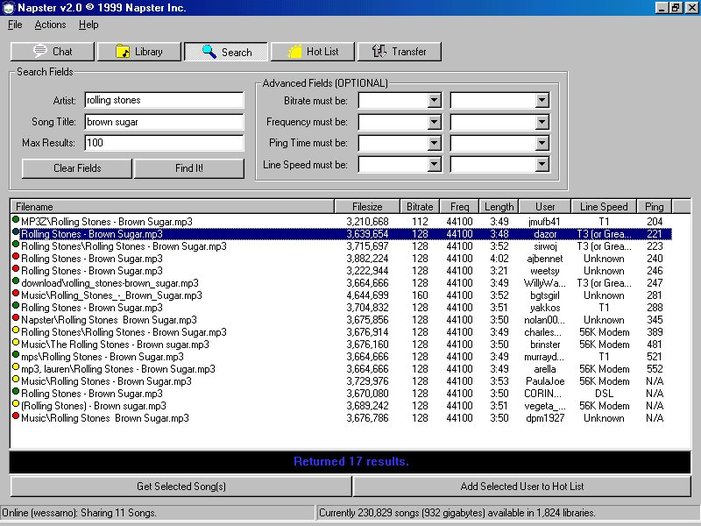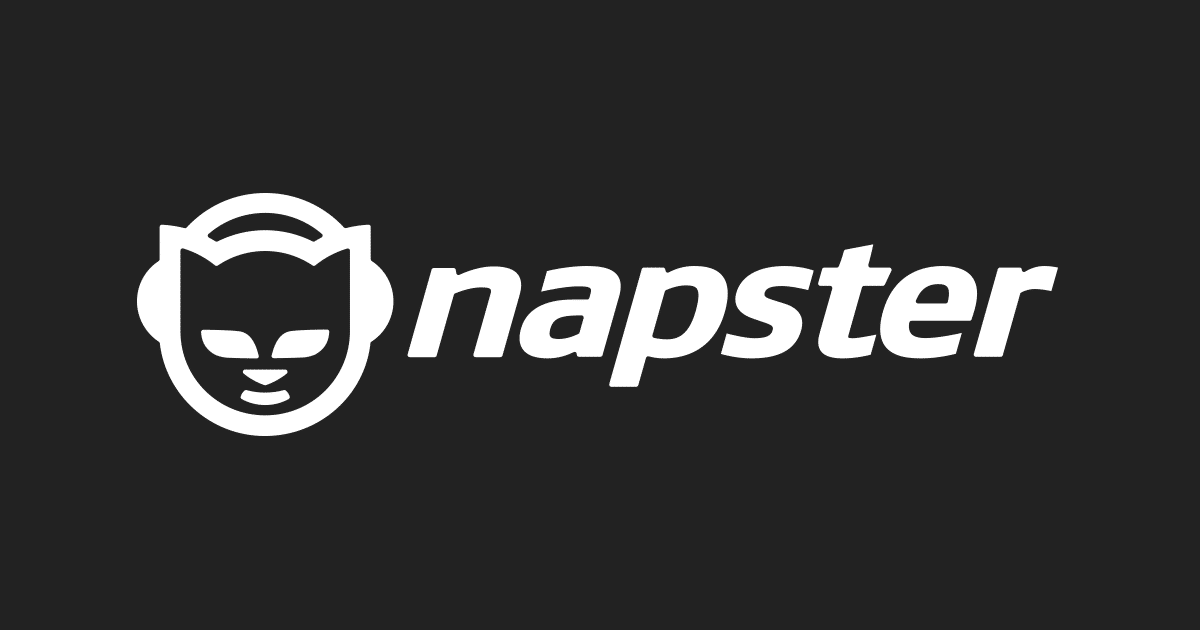In the late 90’s, getting music into your home was a process of going to the store, buying a CD, going back home, and putting that CD in a CD player. In 1999, this would all change with the rise of the computer application Napster. Build by two then students, Shawn Fanning and Sean Parker, it would change the music industry forever.
The Napster story is really a tale about big industries failing to catch up with digitalization. By the late 90’s all the technologies to easily and readily share files were there. Homes had personal computers on which different file types were stored, and these file types could easily, if slowly, be sent to other users across the internet. Napster utilized peer to peer networks, where users could access and download the songs off the hard drives of other users. Napster wasn’t even the only application to offer services like this. Networks like IRC, Hotline and Usenet were already out there, what separated Napster from them was its user friendliness and focus on mp3 audio files (Gowan, 2002). In a way, something similar to Shawn Fanning and Sean Parker creating and launching Napster was always going to happen, they were just the first to do so.

Of course, the music industry and RIAA (the Recording Industry Association of American) specifically, wouldn’t let a program like Napster slide that easily. Almost from its inception onwards, Napster would face lawsuits which would eventually lead to their shutdown in July of 2001, but not before reaching a peak of 80 million registered users (Creager, 2019). By this point however, other programs like LimeWire, Kazoo and BitTorrent had popped up, each of which performed similar services as Napster. No matter how many court cases the music industry started, it seemed like the floodgates were now opened, and it was too late to go back to the CD based distributing of the past.
In the same year that Napster shut down, Steve Jobs launched the first digital store for music, called iTunes. Here, users could acquire their digital music legally. Music companies faced a tough decision: either have Apple distribute their music for them on the internet against very low margins or refuse to go digital and watch on as people pirate their music anyways. A decade after that, Spotify launched, using a different, subscription-based model to give users access to an almost endless supply of music.
It’s fair to say that the music industry never really recovered from the shockwave Napster put into motion. Today, artists make a lot less money than they used to, mainly getting by on the popularity and tours the digital distribution permits them (Sisaro, 2021). This also is maybe the silver lining for artists, because while the digitalization of the music industry has brough with it dramatic revenue cuts, it also allows users to find and enjoy artists that they would otherwise have never heard of.
Thumbnail credit: https://www.informacyde.com/blog/music/mon-avis-sur-napster/
Image credit: https://musicatyourfingertipss.weebly.com/napster–its-evolution.html
References
Creager, R. (2019, July 26). Short song: The Rise and Fall of Napster – Inventors Digest. Inventors Digest. https://www.inventorsdigest.com/articles/short-song-the-rise-and-fall-of-napster/
Gowan, M. (2002, May 18). Requiem for Napster. Pcworld. Retrieved September 17, 2024, from https://web.archive.org/web/20140426235542/http://www.pcworld.idg.com.au/article/22380/requiem_napster/
Sisaro, B. (2021, May 7). Musicians Say Streaming Doesn’t Pay. Can the Industry Change? Nytimes. Retrieved September 17, 2024, from https://www.nytimes.com/2021/05/07/arts/music/streaming-music-payments.html

